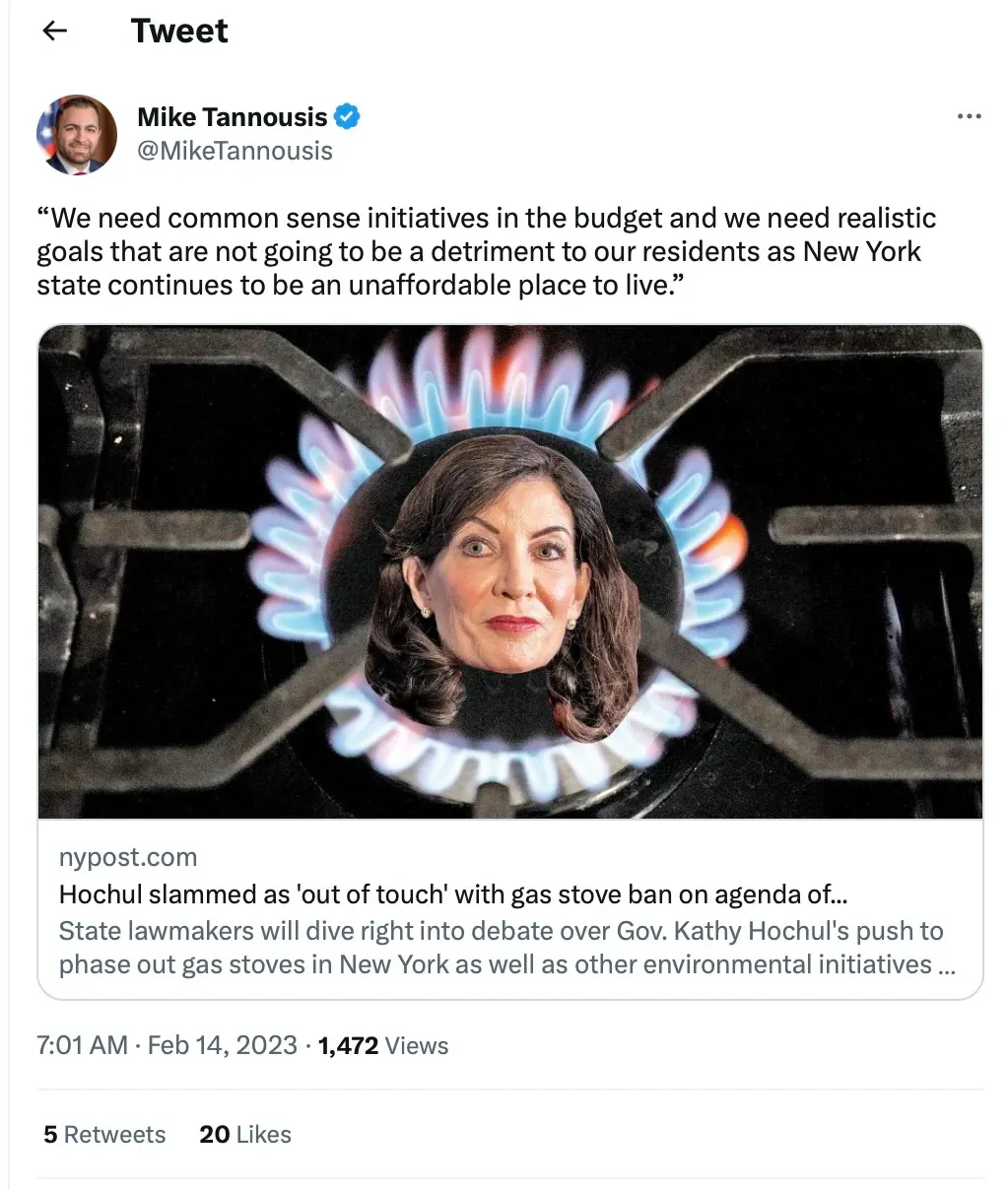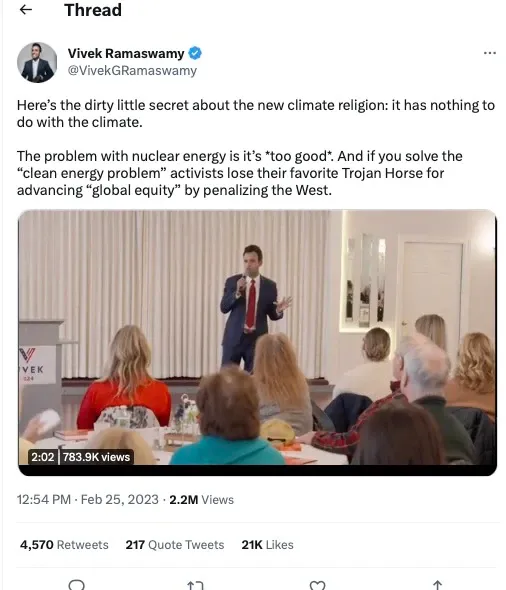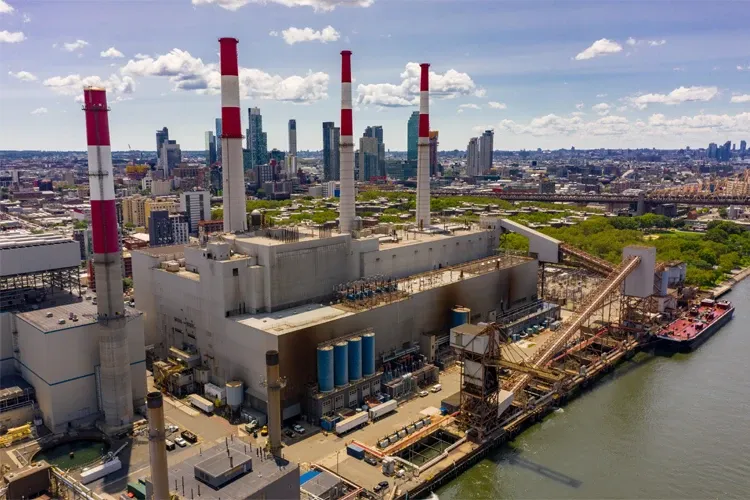New York climate policies are increasing energy costs and creating power supply problems, which is hurting middle-class families and forcing many New Yorkers to flee the state.
Through a series of aggressive policies on the local and state level, starting with the 2019 Climate Leadership and Community Protection Act, New York officials have committed to changing the state's power consumption to:
- 70% renewable energy by 2030
- 9,000 megawatts provided by offshore wind and 100% light duty vehicle sales by 2035
- 100% zero-emission electricity by 2040
- 85% reduction in greenhouse gas emissions by 2050.
Although many residents favor renewable energy initiatives, they are concerned that the current policies are too aggressive, too expensive, and will be less reliable than current power sources.
New York Assemblyman Michael Tannousis (R-Staten Island) echoed concerns about needing realistic energy goals that are not going to hurt the residents of New York:
We need common sense initiatives in the budget and we need realistic goals that are not going to be a detriment to our residents as New York state continues to be an unaffordable place to live.

Retired New York City firefighter Arthur Leecock left New York in 2020 because he felt that the money he paid to live there did not justify the quality of life he was receiving. He cited energy costs as one of his major reasons for leaving New York.
“In New York, I used oil for heat, gas for my stove and dryer, and I used electric for everything else,” Leecock told the Sentinel. “During a normal winter, my oil bill would have been about $1,000 a month, but if I used electricity for heating, it would have been double that, which is hard for a working family to afford.”
Leecock, like many other New Yorkers, likes the idea of renewable energy, but he is afraid that the transition timeline is too aggressive based on what he has seen from other energy initiatives in the past.
Said Leecock to the Sentinel:
I think renewable energy is great, but you can’t just put something out there without proof that it is going to be a better solution. New York has a history of making big changes to its power sources without positive results. Renewable energy has not been tested enough to make it the sole energy source. We need to make sure the grid can be sustained before eliminating fossil fuels. What happens when everyone transitions to everything electric, and the grid fails?
Currently, approximately 62% of New York homes use gas stoves, and approximately 80% of homes use some form of fossil fuel for heating. Based on New York’s climate policies, this would transition to renewable energy, but so far renewable energy does not provide enough power to replace fossil fuels.
In 2021, both renewable sources and nuclear power accounted for 54% of New York’s generated power; 25% of that came directly from nuclear, which was down from 34% in 2019 after one of the state’s four nuclear power plants were closed.
The use of nuclear power during the transition from fossil fuels to renewable energy has caused debate among environmentalists.
Although several environmentalists want any energy investments to be made in renewable energy, climate scientist Dr. James Hansen believes that employing nuclear power during the transition will help New York achieve its goals because nuclear power has the smallest land footprint and lowest emissions. In a letter, he cites how many countries, which had transitioned away from nuclear, are now supporting a new generation of reactors.
2024 presidential candidate Vivek Ramaswamy claims that environmentalists do not like nuclear energy because it’s too good:
Here’s the dirty little secret about the new climate religion: it has nothing to do with the climate.
The problem with nuclear energy is it’s *too good*. And if you solve the “clean energy problem” activists lose their favorite Trojan Horse for advancing “global equity” by penalizing the West.

Solar and wind energy are growing in use, but both sources have yet to create enough power to support the current energy needs of New York, not to mention the increased demand caused by electric vehicles.
During winter months, parts of New York could experience long periods with low exposure to sunlight, and with the rising number of whale deaths occurring after recent offshore wind energy development, a long term viable replacement to fossil fuels is still not guaranteed.



